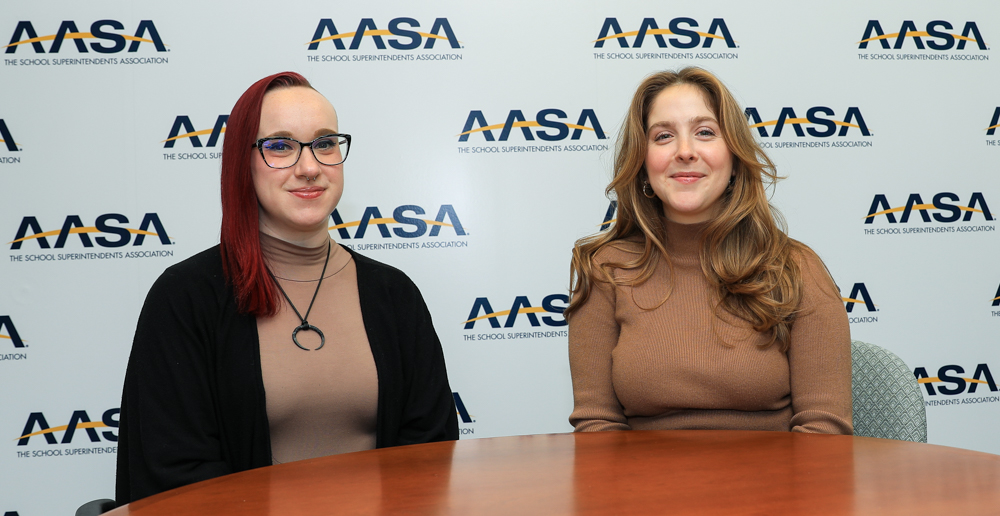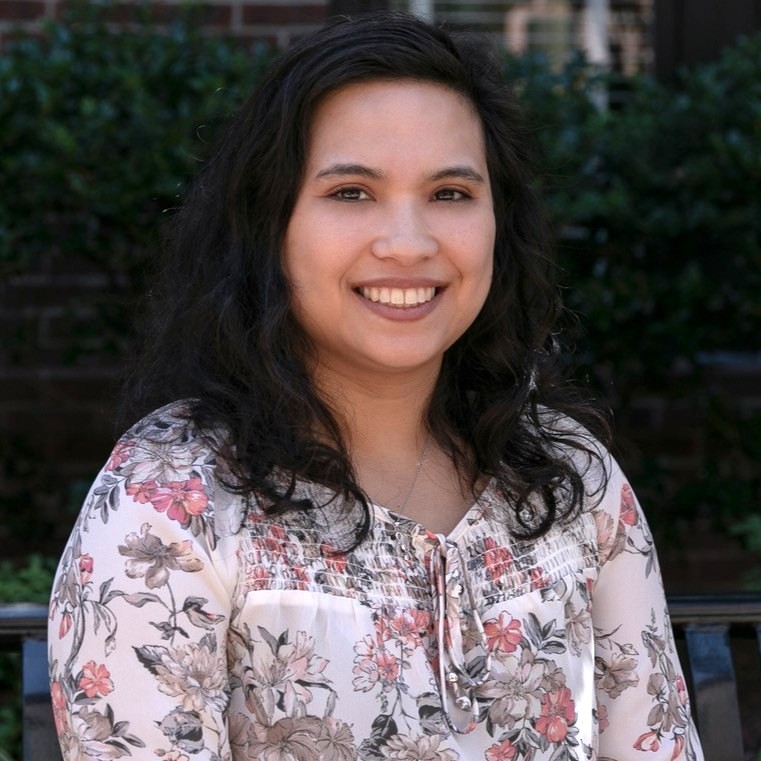Advocacy and Governance Team’s Key Support Role
April 01, 2024
Inside AASA

You may know that AASA employs an advocacy team, but did you know how much ground they really cover on Capitol Hill? And what does governance within AASA’s organizational structure look like?
Policy analyst Tara Thomas focuses on advocacy for the association, while Kat Sturdevant coordinates the work of the four staffers involved in federal advocacy and AASA governance. Sturdevant also hosts the department’s new podcast, PEP Talk. Both staff members started at AASA in fall 2021.
The following interview with Thomas and Sturdevant by School Administrator senior editorial assistant Jacqueline Hyman has been edited for length and clarity.
What work were you doing previously? What made you interested in joining AASA?
Tara Thomas: Before joining AASA, I worked for the Girl Scouts’ public policy office as the public policy associate. There I did similar things in terms of the advocacy work. The Girl Scouts advocated on the issues of outdoor education, after-school opportunities, K-12 adjacent policies, but I was really interested in working directly in the K-12 space on behalf of educators who are doing the good work. That’s what I found so exciting about the organization.
Kat Sturdevant: I was managing a small nonprofit as office administrator in New Jersey called the Foundation for Diabetes Research. Even before that, I had dipped my toes in campaigns and politics, so I figured I could bridge that gap in those two experiences by bringing my experience in policy and nonprofit management. My mom has been a teacher for 30 years — she just retired — so I was interested in education.
What are some of your responsibilities? What is the difference between AASA’s advocacy and governance teams?
Sturdevant: I bridge the gap between the advocacy work we do and the governance side. I report directly to Noelle Ellerson Ng (associate executive director of advocacy and governance). Part of my responsibilities at advocacy is making sure our work is very visible and accessible to our members. For example, I designed a report about obtaining parental consent for districts to bill Medicaid expenses. While the team writes these reports, I take the text and turn it into something our members can digest. Additionally, I record podcasts with researchers and superintendents on policy topics of interest.
On the governance side, we are the first stop on the train for what members need from the internal governance side of AASA, which has three branches: the officers (president, past president and president-elect), the Executive Committee and then the Governing Board.
Thomas: On the advocacy team, I’m one of three advocates, along with Sasha Pudelski (director of advocacy) and Noelle. We divide up all the topics. My portfolio includes early education, higher education, rural education and school nutrition. In the higher education space, we’re really focused on teacher shortages, increasing the educator workforce, making sure that students have access to good teachers.
Our responsibility is ensuring that those in the federal government hear and understand the superintendent on issues. We work with Congress, pushing and advocating for what’s on our legislative agenda, or opposing other bills that might negatively impact schools and students.
And on the regulatory side, we focus on proposed rule-making, submitting comments, making sure regulations are there to support districts and not overly burdensome. We make sure the perspective of the school superintendent is heard in D.C.
What are your hopes for what the advocacy department at AASA can achieve?
Sturdevant: As long as we can continue making good federal policy decisions that benefit public school students, that’s all I can ask for. Part of that is making the work we do more visible to superintendents. I would also love for them to have more information about what goes on at the federal level, how it impacts them and how they can change policy. They have the power to do that.
Thomas: The No. 1 priority for the advocacy team will always be fully funding IDEA. That’s quite a lofty goal given the financial constraints politically. But IDEA funding has a huge impact on districts and students.
Smaller technical changes to the school nutrition program would help with implementation on the ground. And finally, I would love to get more superintendents engaged in direct advocacy.
Tell me about your podcast, PEP Talk.
Sturdevant: Our department did have a podcast that ended around 2021. It was mostly Noelle doing interviews over Zoom or the phone. I told Noelle I would love to produce a podcast talking to superintendents, practitioners and fellow organizations that we work with. The goal is to take something we’re working on and turn it into a half-hour podcast a superintendent can listen to at their desk or while they’re working out to stay informed. It comes out every third Thursday of the month.
My favorite episode so far was with Tara about rural education. It really was fun to interview my colleague, and we already get along so well, it was just so natural. I don’t know a lot about this policy area, so I was excited to learn about it.
What makes AASA’s advocacy and governance department unique?
Sturdevant: AASA advocates for all public school students and K-12 administrators, and I think that we do a good job of that with our advocacy work making sure superintendents stay informed and even inviting them to the table and the conversation. That’s the thing we do really well, especially at our federal advocacy conference every July. Members speak directly to their members of Congress.
Thomas: Everything we do is member-driven. The positions we take on issues are from the superintendents on our Executive Board and Governing Board. I think that can be a bit unique in comparison to other organizations that might be engaged in advocacy.
And when it comes to our advocacy team, the experience that Sasha and Noelle have advocating for superintendents for AASA is unmatched.
Inside AASA is an occasional column about principal employees and priorities of the association.
Author
Advertisement
Advertisement
Advertisement
Advertisement




